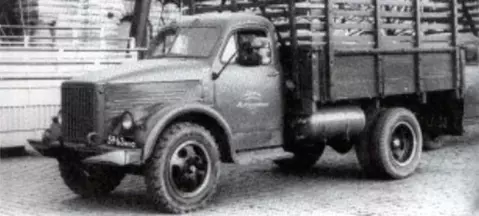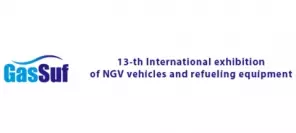- Main page
- Search
- Up to date
- Products
- Technology
- Vehicles
- Video
- Conversion Payback Simulator
Port Injection - Conversion Payback Simulator
Direct Injection - Conversion Payback Simulator
Diesel - Newsletter
GAZ 51ZH - it's a GAZ!
 loading results...
loading results... © Avto CCCP
© Avto CCCP The GAZ 51 had a petrol-powered engine, so developing a version running on autogas was no challenge engineering-wise. Given the USSR's/Russia's self-sufficiency when it comes to crude oil mining and refining, fueling the new vehicle was probably not a problem, either. Unfortunately, precise figures and data concerning refueling stations infrastructure or modifications to the engine remain unknown, but given that LPG didn't make a whopping career in later years (although it was used in the ZIS 156A, manufactured at around the same time as the GAZ 51ZH), the initiative could have been a local one.
 © Avto CCCPThe number of GAZ 51's versions bordered on infinite and the LPG-powered 51ZH was just one of them
© Avto CCCPThe number of GAZ 51's versions bordered on infinite and the LPG-powered 51ZH was just one of themAs for the engine, it was most probably converted with a vacuum-operated LPG system, with a mixer mounted in the unit's air intake system and a simple reducer, not even a particularly efficient one. Why? Because the 3,5-litre, 6-cylinder inline engine generated as little as 70 PS (in petrol mode). When it ran on LPG, power was further limited by the mixer (as it obstructed the air duct) and dropped to 62 PS. The 51ZH couldn't have been fast, either – the regular petrol version topped out at 70 km/h and, mind you, it was by 8 PS more powerful and 90 kg lighter than the autogas one.
Autogas was stored onboard in a tank with a capacity of approx. 290 l, but should it run out, the petrol system was left intact and fully functional (the 51ZH was a bi-fuel car). As for fuel economy, the regular GAZ 51 required some 20 l of petrol per 100 km, so we can only estimate that the LPG variant, with its vacuum autogas system and manual air-fuel mixture composition regulation, must have needed some 25-30 l/100 km. The vehicle, whose nickname was Gazon (regardless of the fuel it used), was manufactured in its LPG version between 1954 and 1975, but the number of examples produced remains a mystery today. However, given that the truck remained in production for over 20 years (even if it was a limited run), there must have been stable demand for it in the Soviet market. Today there's renewed interest in alternative fuels in Russia, but in the 21st century GAZ bets on another gaseous fuel – compressed natural gas, or CNG.
You may also find these interesting:
 loading results...
loading results...







